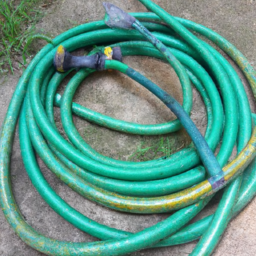How Many GPH Garden Hose
How Many Gph Is A Garden Hose
Introduction
The amount of water that can be discharged through a garden hose is often dependent on the size of the hose, as well as the pressure of the water source. People with gardens need to know the flow rate, or GPH (gallons per hour), of a hose in order to choose the right one for the task. This article will walk you through the details of hose size and flow rate, as well as popular types of hoses available for homeowners.
Hose Size Government Regulations
The federal government regulates the size of hoses that can be sold to the public. The maximum inside diameter of a hose must not exceed 5/8 of an inch, and the minimum diameter must be at least inch. However, there are different lengths of hoses available, so even if you have a very short hose, for example, you may still get a full-size hose that can discharge a large amount of water.
Diameter to GPH Relationship
The inside diameter of a hose will determine the water flow rate. As the diameter increases, the flow rate increases, and as the diameter decreases, the flow rate decreases. Generally speaking, a 5/8 inch hose is capable of discharging up to 30 gallons per hour (GPH), while a inch hose can only discharge up to 2 GPH.
Hose Connections
To ensure that a garden hose has the right connection, it is important to ensure that the connection to your faucet matches the connection on the hose. Many garden hoses come with a variety of connection sizes, but if you are using a hose with a specific size, then you should ensure that it fits the faucet.
Hose Length Matters
When choosing a garden hose, it is important to consider the length of the hose as this will also impact the flow rate. A longer hose will reduce the flow rate, as the water has to travel a longer distance, while a shorter hose will increase the flow rate.
Pressure
The pressure of the water source will also affect the flow rate. If the pressure is low, then the flow rate will be lower, although this can be improved by using a pressure regulator.
Types of Garden Hoses
There are many different types of garden hoses, and the type of hose you choose will depend on the specific needs of your garden. The most common types of hoses include lightweight hoses, expandable hoses, and heavy-duty hoses.
Lightweight Hose
Lightweight hoses are more affordable and lighter in weight, making them easier to store and transport. They are great for people who don't need a powerful flow rate.
Expandable Hose
Expandable hoses are great for people who need a portable hose that can be easily stored. The hose expands when water is turned on and contracts when the water is turned off.
Heavy-Duty Hose
Heavy-duty hoses are best for people who need a powerful and reliable flow rate. These hoses are more durable and can handle higher water pressure.
Conclusion
When choosing the right garden hose for your needs, it is important to consider the size, length, and type of hose you need. It is also important to consider the flow rate of the hose, as this will determine the amount of water you can get from the hose. Make sure to choose a hose that is able to handle the pressure of the water source, as this will affect the flow rate as well. With the right garden hose, you can get the water you need for your garden.

Previous Page
Next Page
